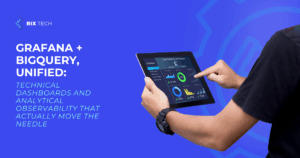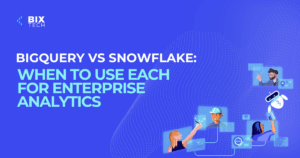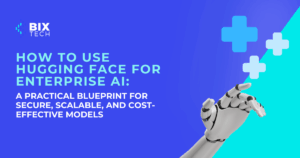How AI-Powered Data Analysis Accelerates Smarter Decisions for Your Business

Sales Development Representative and excited about connecting people
Table of Contents
- Why Traditional Data Analysis Holds You Back
- AI for Data Analysis: What It Really Means
- How AI Data Analysis Works in Practice
- Key Benefits of AI-Driven Data Analysis
- How to Get Started with AI in Your Organization
- Final Thoughts: Start Small, Think Big
Why Traditional Data Analysis Holds You Back
Are you still relying on endless spreadsheets, slow-to-generate reports, or gut feelings to make business decisions? If so, it might be time to rethink your data strategy. Relying on manual processes and intuition can mean missed opportunities, delayed responses to market shifts, and decisions that are, at best, educated guesses rather than data-driven.
Modern organizations are moving away from time-consuming data wrangling and toward automated, AI-powered insights. The good news? You don’t need a massive team of data scientists or a complete systems overhaul to get started. With the right tools and a focused approach, businesses of any size can automate repetitive tasks, uncover hidden patterns, and make faster, more reliable decisions.
Practical Example:
A mid-sized retail company struggled with monthly sales forecasting due to manual data aggregation. After adopting AI-driven analytics, they reduced reporting time by 70% and saw a 15% increase in forecast accuracy.
Actionable Takeaways:
- Audit your current data processes: Identify tasks that are repetitive or slow.
- Set a goal to automate at least one core data task in the next quarter.
- Explore modern AI-powered analytics platforms that integrate with your existing systems.
AI for Data Analysis: What It Really Means
Imagine a fast-paced retail operation with thousands of products, hundreds of locations, and streams of sales data pouring in every hour. Instead of sifting through this data manually, what if you had an intelligent system that automatically collected, organized, and analyzed information from every source—then suggested actions like restocking a store before shelves run empty?
That’s the power of AI in data analysis. AI doesn’t just help you crunch numbers; it supports, automates, and enhances every stage of the analytics lifecycle:
- Data Collection & Preparation: Ingests data from multiple sources and automates cleansing.
- Pattern Recognition: Detects trends, customer behaviors, and outliers that would be nearly impossible to spot manually.
- Actionable Recommendations: Suggests next steps, such as targeted promotions or inventory adjustments, based on predictive models.
AI empowers teams to make decisions based on evidence and real-time data, rather than just historical trends or intuition.
Case Study:
A logistics firm integrated AI into their data workflows, allowing them to predict delivery delays by analyzing weather, traffic, and historical shipment data. The result? A 20% reduction in late deliveries and improved customer satisfaction.
Actionable Takeaways:
- Identify high-impact, data-heavy processes in your business.
- Research AI solutions that specialize in your industry (e.g., retail, logistics, finance).
- Consider starting with a pilot project to demonstrate tangible value.
How AI Data Analysis Works in Practice
AI-driven data analytics is more than a fancy dashboard—it’s a continuous, adaptive process that gets smarter over time. Here’s a typical workflow:
- Automated Data Collection
- Integrate with CRMs, ERPs, IoT devices, e-commerce platforms, and social media.
- AI gathers data in real time or batches, eliminating manual entry.
- Data Cleaning & Preparation
- Algorithms handle missing values, correct inconsistencies, and structure data for analysis.
- This step is crucial for ensuring high-quality insights.
- Predictive Modeling
- Machine learning models are trained on historical data.
- They forecast trends, classify data, and spot patterns you might otherwise miss.
- Generating Insights & Recommendations
- AI translates complex data into actionable insights, visualizations, and alerts.
- For example, it can identify high-risk customers or flag products for promotion.
- Continuous Improvement
- The system learns from new data, refining its predictions and adapting to shifts in business conditions.
Real-World Example:
A subscription service used AI to analyze customer churn. By identifying subtle behavioral patterns, they proactively engaged at-risk customers, reducing churn by 12% in six months.
Actionable Takeaways:
- Map out your current analytics workflow and pinpoint bottlenecks.
- Prioritize automating data collection and cleaning for immediate gains.
- Set up regular reviews to assess model performance and make iterative improvements.
For a deeper dive into how AI and data science can revolutionize business operations, check out this comprehensive guide.
Key Benefits of AI-Driven Data Analysis
Why should your business embrace AI for data analytics? Here’s what you stand to gain:
- Speed & Efficiency
- Automate tedious data prep and reporting.
- Free up your team to focus on strategic tasks.
- Better Decision-Making
- Use predictive analytics to anticipate trends, mitigate risks, and seize opportunities.
- Make decisions based on real-time insights, not just historical data.
- Scalability
- Handle large volumes of data without expanding your team.
- AI systems operate 24/7, constantly learning and adapting as your data grows.
- Actionable Results
- Go beyond static dashboards: AI delivers recommendations and automated alerts.
- Drive real outcomes, not just prettier reports.
- Adaptability
- In fast-changing markets, AI models update in real time to reflect the latest shifts.
- Stay ahead of the curve—don’t just react to yesterday’s news.
Case Study:
A manufacturing company implemented AI-powered analytics to monitor equipment health. Predictive maintenance reduced downtime by 30% and saved hundreds of thousands of dollars annually.
Actionable Takeaways:
- Set clear KPIs for what you want to achieve with AI analytics (e.g., reduce churn, improve forecasting).
- Track before-and-after metrics to quantify impact.
- Consider how automated recommendations could streamline your business decisions.
To explore the transformative impact of AI-driven solutions in software development, visit AI-Driven Innovations in Software Development.
How to Get Started with AI in Your Organization
Adopting AI for data analysis doesn’t require a complete overhaul—start small, with clear objectives and a focus on business value.
1. Pick a Concrete Business Problem
- Identify a specific challenge (e.g., improving sales forecasts, reducing customer churn, optimizing inventory).
- Focus on issues where data already exists and the upside is clear.
2. Prepare Your Data
- Good AI needs good data. Invest time in cleaning, standardizing, and integrating your information sources.
- Even the best algorithms can’t fix messy, inconsistent data.
3. Leverage Existing Tools
- Many BI and CRM platforms now include built-in AI features.
- Use these to pilot AI initiatives without major upfront investment.
4. Scale with Expertise
- As your needs grow, consider partnering with AI specialists to build custom models, optimize existing ones, and ensure alignment with your strategic goals.
5. Embrace Iteration
- Don’t wait for “perfect.” The most successful AI projects start small, test early, and adapt based on real-world feedback.
Example:
A SaaS startup began by using off-the-shelf AI tools to automate customer support ticket classification. As the business scaled, they brought in data experts to build custom models, further improving efficiency and customer response times.
Actionable Takeaways:
- Choose a pilot project with visible business impact.
- Assign a cross-functional team to lead your AI initiative.
- Document lessons learned to inform future, larger-scale AI rollouts.
For more advice on when your company is ready for AI solutions, see When Does My Company Need AI Services?.
Final Thoughts: Start Small, Think Big
In today’s fast-paced business landscape, AI-powered data analysis is no longer just a “nice-to-have”—it’s essential for organizations aiming for speed, accuracy, and sustainable growth. The key is to begin with manageable, high-impact projects, lay a solid foundation with well-organized data, and build on early wins.
By embracing AI for your data analysis needs, you’ll be equipped to forecast trends, respond proactively to market shifts, and make decisions grounded in real-time intelligence. The journey doesn’t require a massive investment or a huge team—just a willingness to start, learn, and scale.
Ready to turn your data into your most valuable business asset? Take the first step today and watch smarter, faster decisions drive your organization forward.
Looking for more insights or hands-on support with AI and data analytics? Connect with our team to discover how we can help you transform your data into powerful business outcomes.










